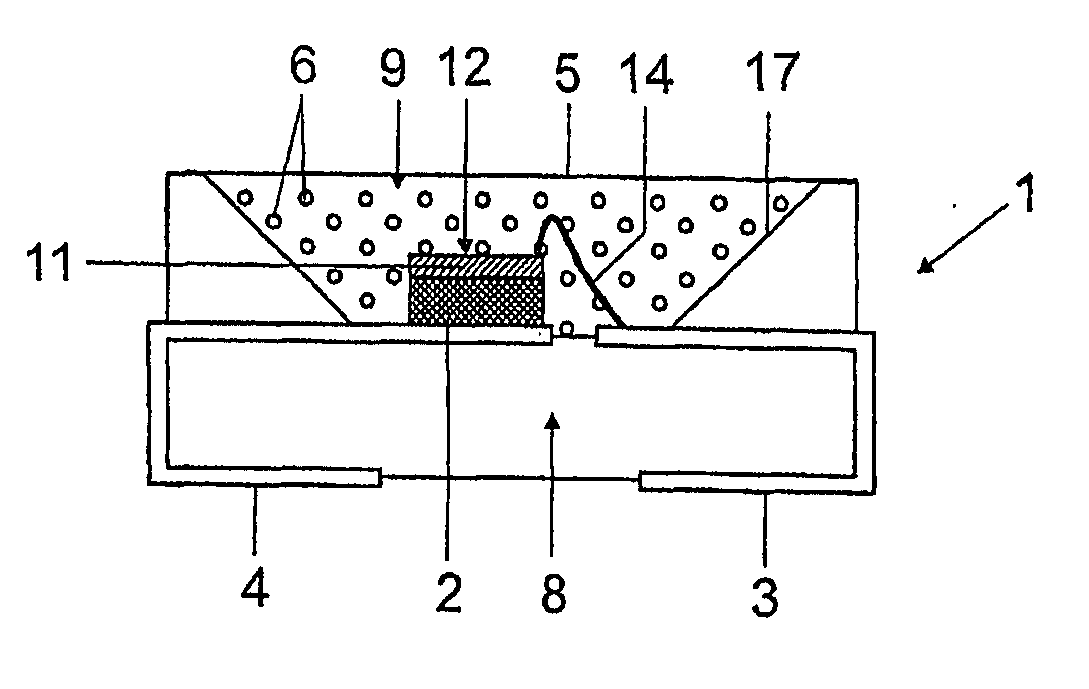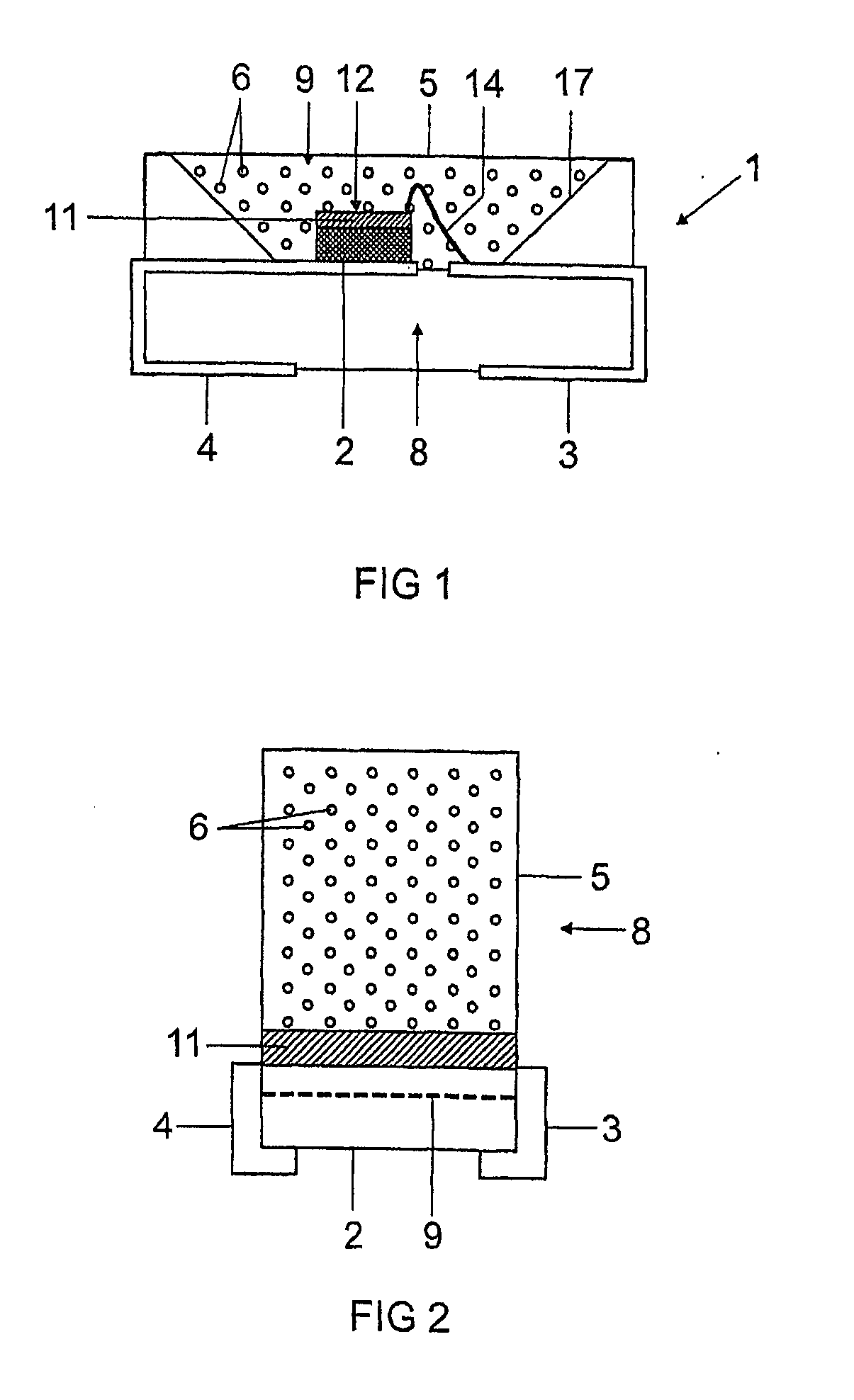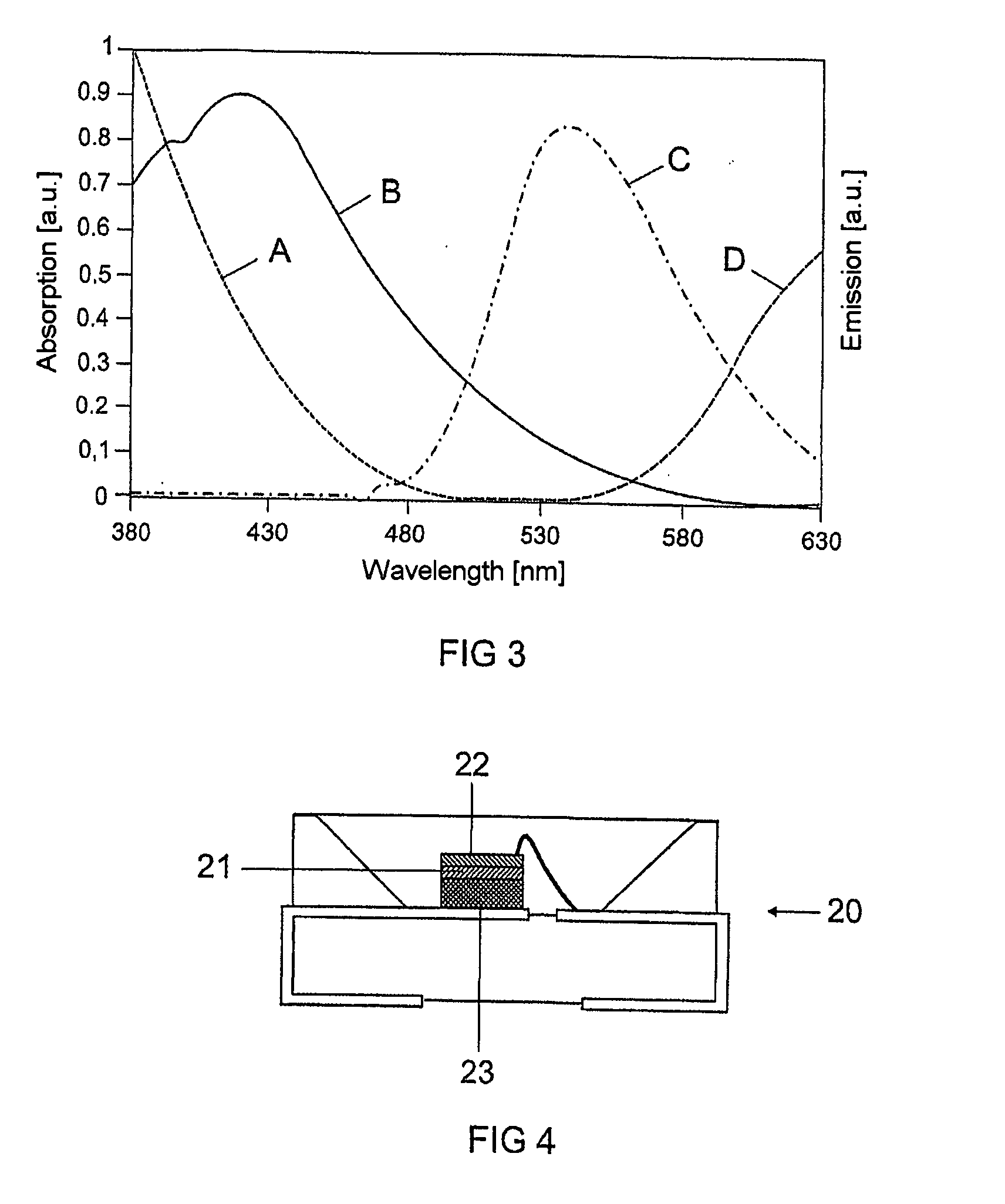Luminescence conversion of led
- Summary
- Abstract
- Description
- Claims
- Application Information
AI Technical Summary
Benefits of technology
Problems solved by technology
Method used
Image
Examples
Embodiment Construction
[0018]By way of example, a structure which is fundamentally similar to that described in U.S. Pat. No. 5,998,925 is used for a white LED together with an InGaN chip. The structure of a light source of this type for white light is specifically shown in FIG. 1. The light source is a semiconductor component 1 having a chip 2 of the InGaN type with a peak emission wavelength of 460 nm, i.e. in the blue, with first and second electrical terminals 3, 4, embedded in an opaque basic housing 8 in the region of a recess 9. One of the terminals 3 is connected to the chip 2 via a bonding wire 14. The recess has a wall 17 which serves as reflector for the blue primary radiation of the chip 2. The red phosphor is applied direct to the chip in the form of a thin film 11. This red phosphor is preferably a nitridosilicate of the MxSiyNz:Eu type, where M=Ca, Sr, Ba, Zn. In this context, it is preferable that z=2 / 3x+4 / 3y. This phosphor is known per se, for example from EP 1 153 101 (Eu-red LED).
[0019]...
PUM
 Login to View More
Login to View More Abstract
Description
Claims
Application Information
 Login to View More
Login to View More - R&D
- Intellectual Property
- Life Sciences
- Materials
- Tech Scout
- Unparalleled Data Quality
- Higher Quality Content
- 60% Fewer Hallucinations
Browse by: Latest US Patents, China's latest patents, Technical Efficacy Thesaurus, Application Domain, Technology Topic, Popular Technical Reports.
© 2025 PatSnap. All rights reserved.Legal|Privacy policy|Modern Slavery Act Transparency Statement|Sitemap|About US| Contact US: help@patsnap.com



